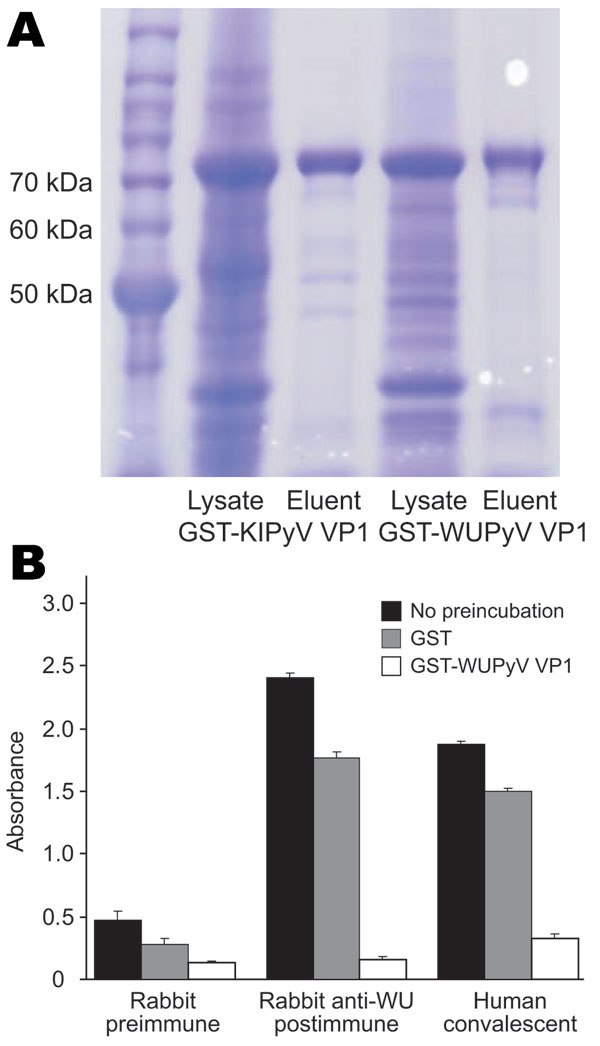Volume 15, Number 8—August 2009
Research
Serologic Evidence of Frequent Human Infection with WU and KI Polyomaviruses
Figure 1

Figure 1. ELISA using WU polyomavirus (WUPyV) viral protein 1 (VP1) or KI polyomavirus (KIPyV) VP1 as the target antigen. A) Coomassie blue staining of a sodium dodecyl sulfate–polyacrylamide gel that contains bacterially expressed glutathione S-transferase (GST)–KIPyV VP1 and GST–WUPyV VP1 before and after glutathione-affinity purification. B) ELISA using rabbit hyperimmune serum and human WU polyomavirus convalescent-phase serum preincubated with buffer alone, GST protein, or GST–WUPyV VP1. Error bars indicate mean and SD.
Page created: October 04, 2010
Page updated: October 04, 2010
Page reviewed: October 04, 2010
The conclusions, findings, and opinions expressed by authors contributing to this journal do not necessarily reflect the official position of the U.S. Department of Health and Human Services, the Public Health Service, the Centers for Disease Control and Prevention, or the authors' affiliated institutions. Use of trade names is for identification only and does not imply endorsement by any of the groups named above.